The time to be an indie developer is now. Even though Unity may be having some problems with contracts, there are plenty of other game engines that you can use to create the game of your dreams. In this series, I will go through how to create your first game. We will look at the Godot 3.5 interface, file pipeline, and GDScript. Once you’ve completed this guide, you should have all the skills you need to begin your journey, including creating a new project. Welcome to the Godot 3.5 beginner’s guide.
If you’re moving from Unity to Godot due to the recent issues with licensing, you’ve come to the right place.
Table of Contents
What is a Game Engine?
Imagine you are building a house, but instead of having all the materials you need, you have to source the raw materials. Once you have the raw materials, you need to create bricks, cement, etc. Once that has done, you can build the house. With a game engine, instead of having to code from scratch, you have an application that does all the heavy lifting instead. So back to the building house analogy: instead of mining for raw materials, you just need to put the components together.
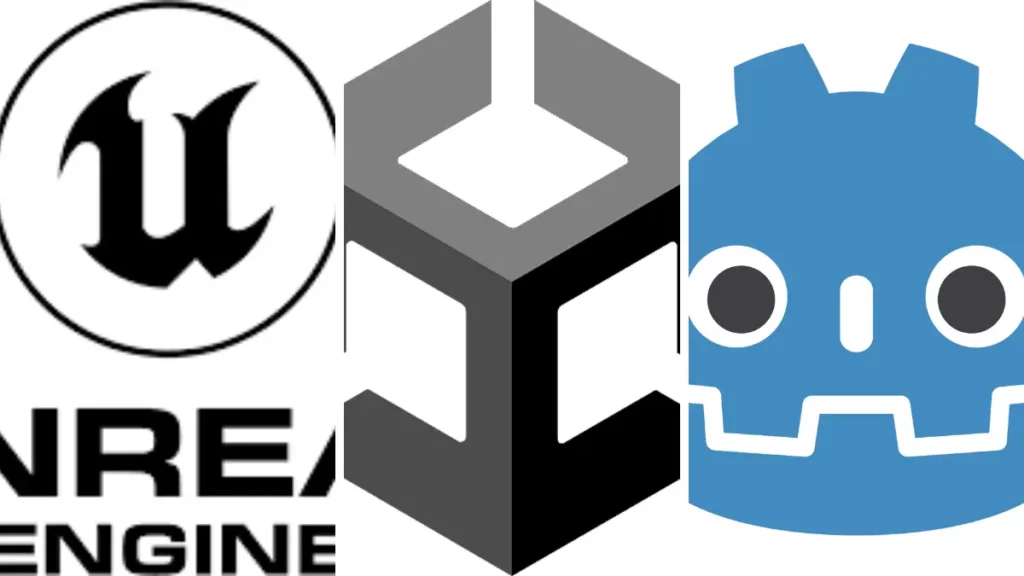
The biggest engines are called Unity and Unreal. These are used by all levels of game developers, from indies to triple-A companies. Learning one of these game engines will get your foot in the door for a career in game development.
Why Godot?
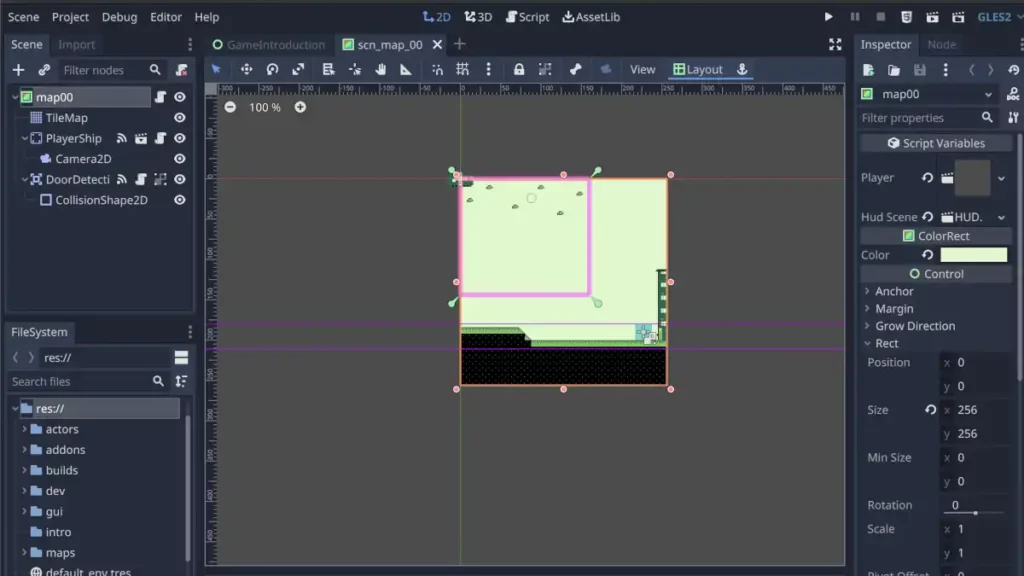
Godot is an open-source game engine. This means that anyone can fork the repository on Github and make changes to the source code to suit their needs. It’s also constantly updated with the help of the community. If a person makes a change to their repository, adding new features or fixing a bug, they can create a request to have these changes implemented in the official version. Even though anyone can submit changes, only the owner of the repository and their auditors can approve changes, so it is very unlikely any malicious code will get through. It is a great Unity alternative if you have been put off by Unity’s practises.
Godot 3.5 or Godot 4.x?
Godot 4.1 is the latest version of Godot. However, there are a few features that are missing when compared to 3.5. Godot 3.5 is the long-term support version, which means it will still receive development for the foreseeable future. Also, a lot of what you can learn in Godot 3.5 can be transferred to 4.1. Currently, if you need to create a pixel art game, your only option is Godot 3.5, as this has pixel-perfect features not present in 4.0 or 4.1.
So follow the below guide to creating a new project in Godot 3.5.
Installing Godot 3.5
- Navigate to https://godotengine.org/.
- Click Download LTS.
- A new page will appear.
- Click Godot Engine. The zip file will download.
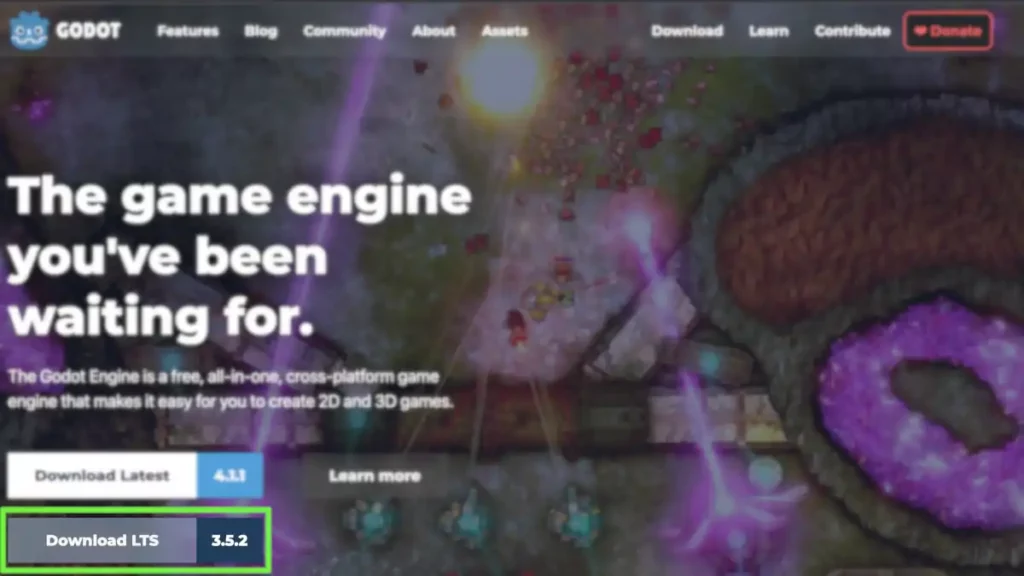
- When downloaded, unzip the file (using your OS’s built in zip program).
- Depending on your OS, there should be an executable file for Godot.
- Move this file somewhere safe so that you can’t accidentally delete it (I save mine in the Applications folder in macOS).
Start a Project
Next up is Creating a new project in Godot 3.5:
- Double click the Godot Application.
- A Project Manager will open.
- Click New Project.
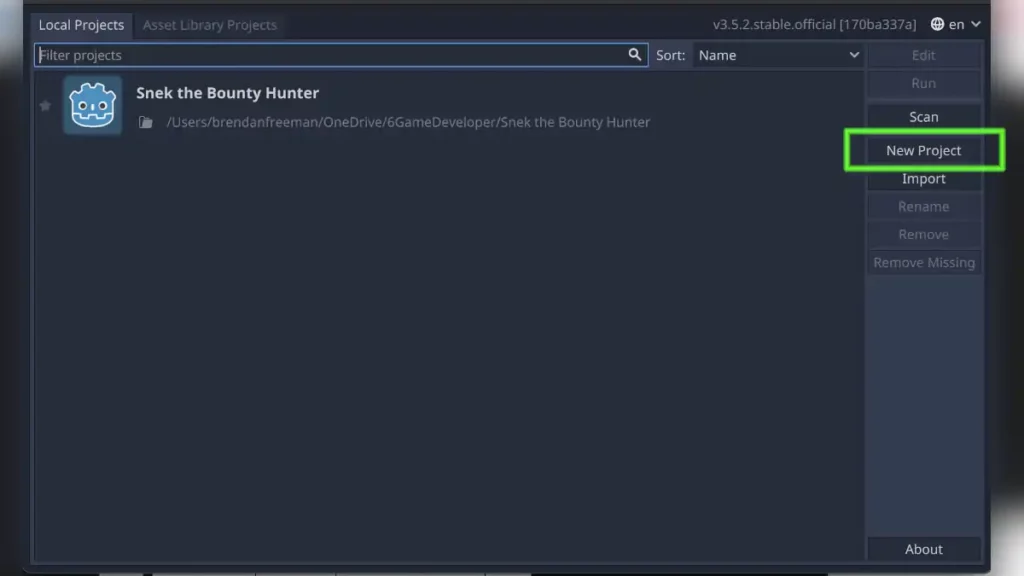
- A new dialog will appear, Enter a project name and select the folder you want the project files to be stored in. Leave the next setting as the default, as we will be making a desktop game.
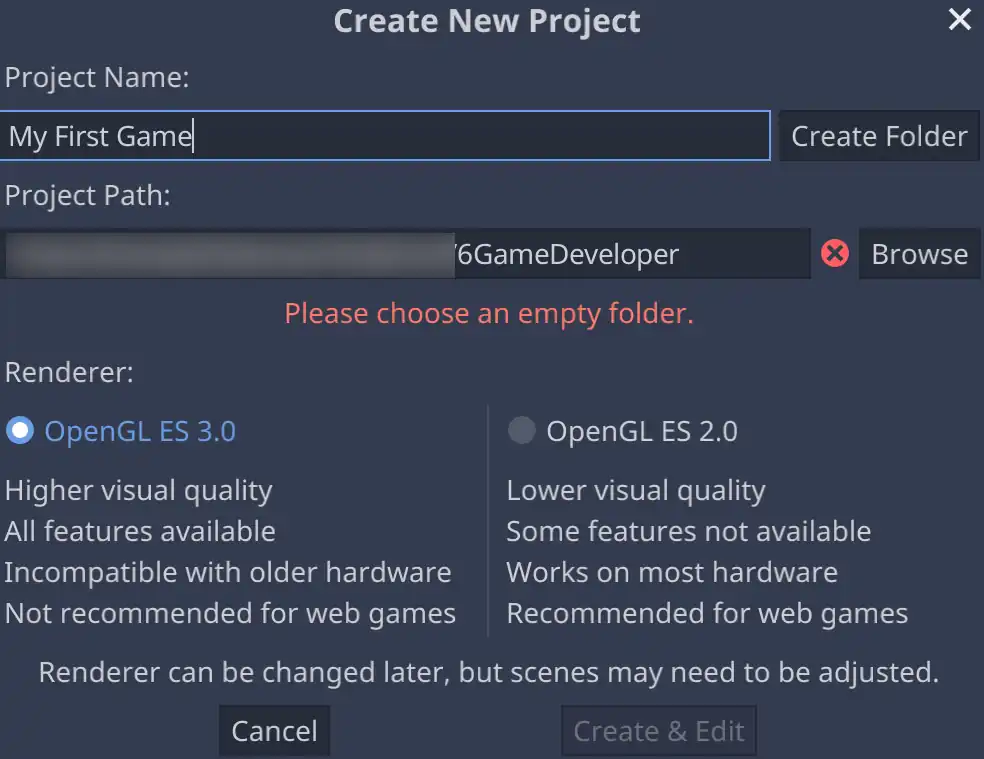
- Click Create & Edit
- The Godot 3.5 editor will now display. You’ve finished creating a new project.
- There are five main areas, we will briefly go through them now:
Main Screen Layout
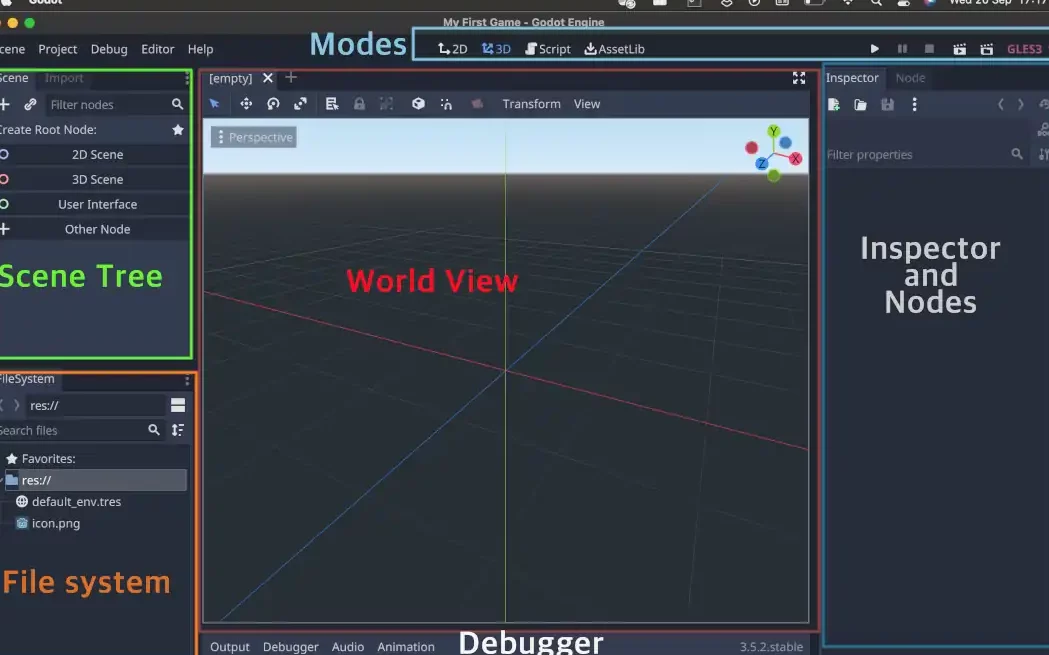
Scene Tree

A Godot game consists of many scenes, these are containers for Nodes and Scripts. The Scene Tree displays the current scene along with all nodes that are loaded into it. More nodes can be added using the plus button. Additional nodes can be added to the scene tree during gameplay via scripting, which won’t appear here. However, when testing the game, an extra tab called Remote appears, which displays all nodes that are currently loaded.
Scenes can contain other scenes as well. Not only should they be used for different maps/levels/boards, but they can also be used to contain player characters, NPC characters, and GUI (Graphical User Interface).
File System

The File System dialog displays the directory of your project. Any folders that are under your project will appear here. Only files compatible with Godot will show such as JPGs and wav files. If you can’t see a file that you need in the file system, Godot either doesn’t support it or you need a plugin.
Not only is this a useful visual tool, but you can drag files into the main window and Godot will automatically import the file and create the relevant node.
Modes

This section of Godot allows you to switch between the different screens. You’ll be mostly using 2D or 3D and the Script tab, depending on whether you’re creating a 2D or 3D game.
On the far right there are a few more buttons. The play, pause, and stop button are used to run a test build of your game. You will be using these buttons a lot once you have your first scene setup.
The Inspector

The inspector provides information on the node you have selected. It includes information such as size of the node, font colors, other colors, a lot of this information can be accessed using scripting but is far simpler to use the inspector.
There is a second tab called nodes, which provides access to signals and groups. Both of which you will be using quite regularly. Signals are events that send out a message to another node which can then run its own script in response. Just like the inspector, if you prefer coding, you can ignore this screen since it can be managed in scripts.
The Debugger
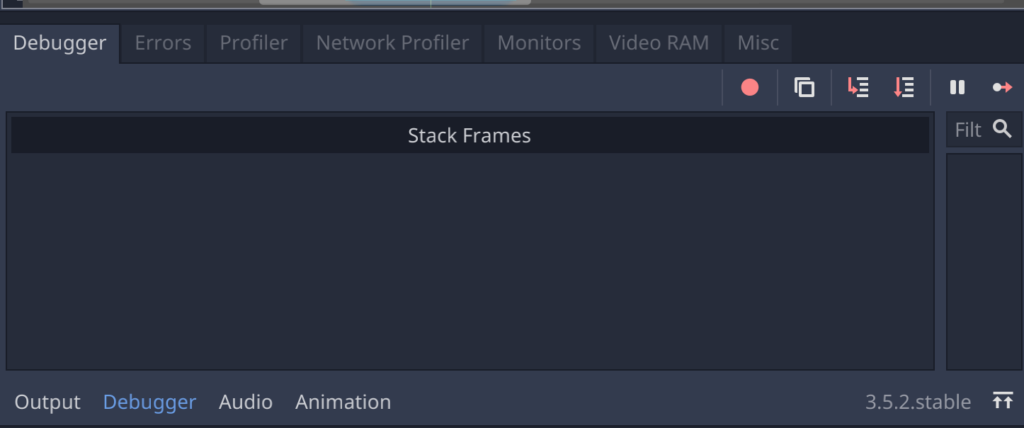
The debugger will throw up any warnings outside of the running of a test build if your code is wrong. It will also do the same during a test build. It is a very useful tool if you know how to use it. We will go through the process of debugging later on, but it is an important tool.
The World View
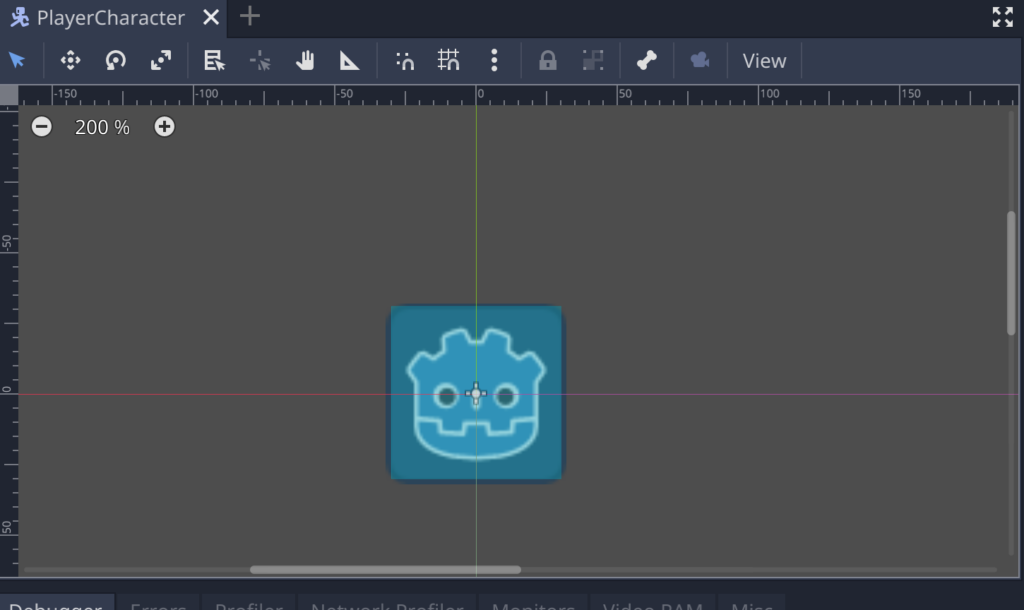
Depending on whether you have selected 2D or 3D mode, this window will display the current scene and any nodes that are visible. It is mostly used to move around elements and is a preview of the game without having to run a test. Note, however, that this window will only display nodes that are in the node tree. Any nodes that are created or made visible during runtime will not be visible to this window.
Check out some of my other Godot posts.
Creating a New Project Summary
We’ve gone through the interface of Godot 3.5 and reviewed each window in the main editing scene and creating a new project. In the next guide, we will create our first scene, which will be a playable character.
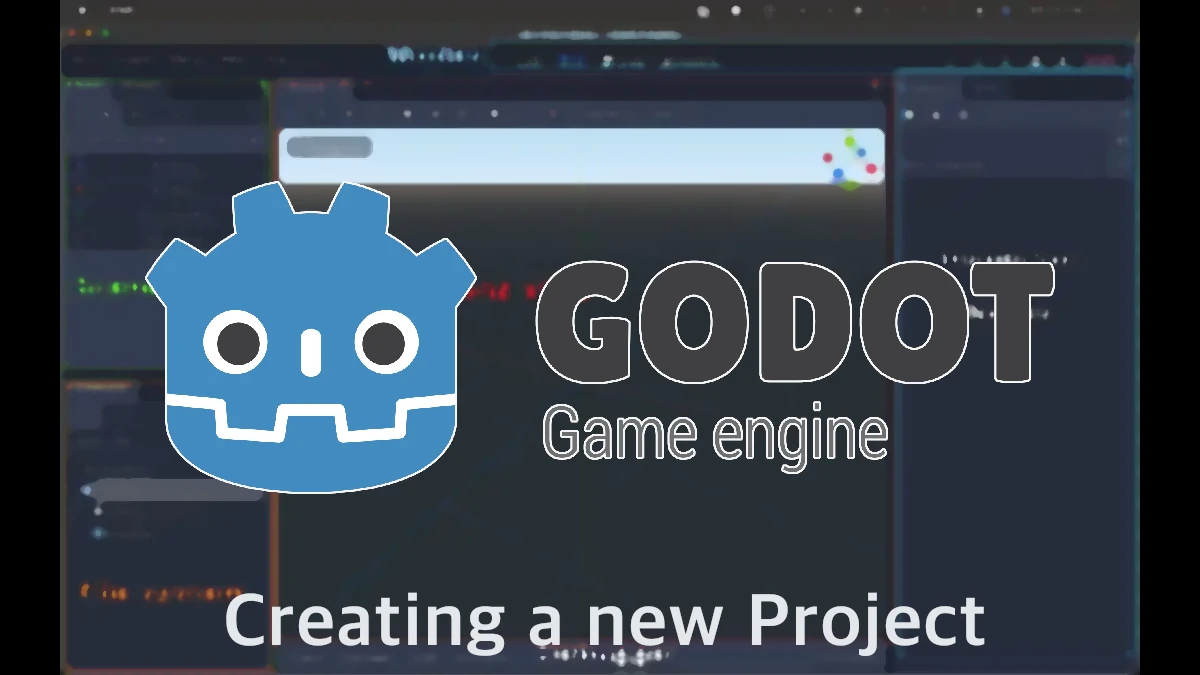
Leave a Reply